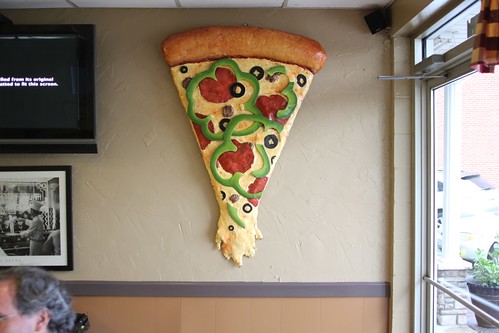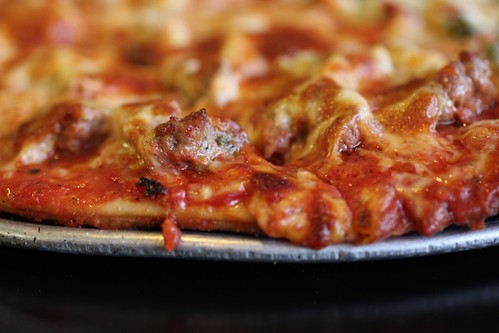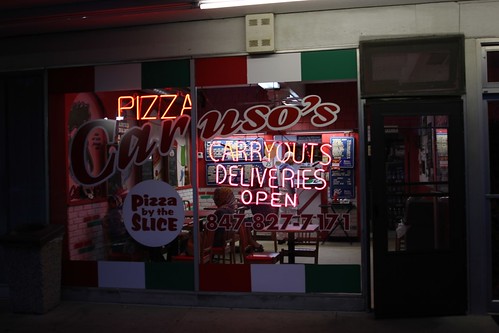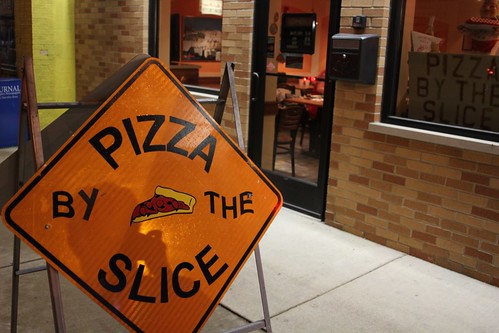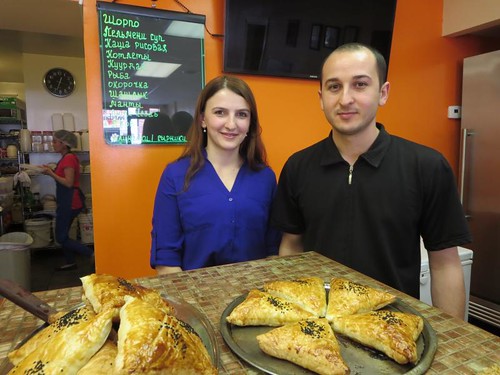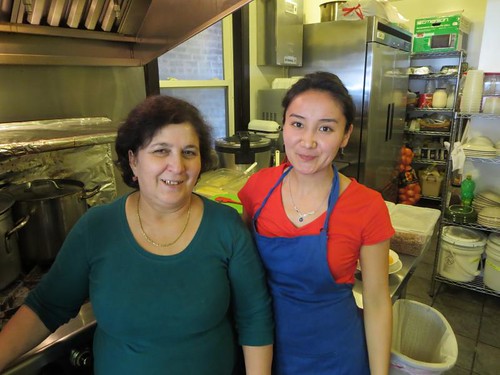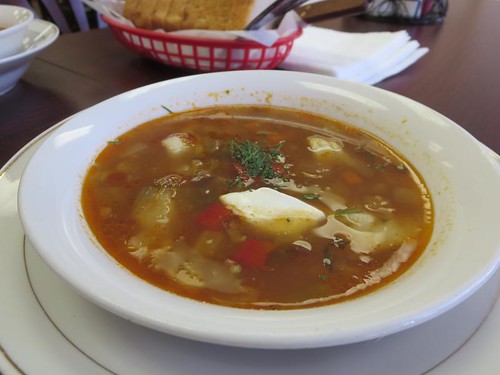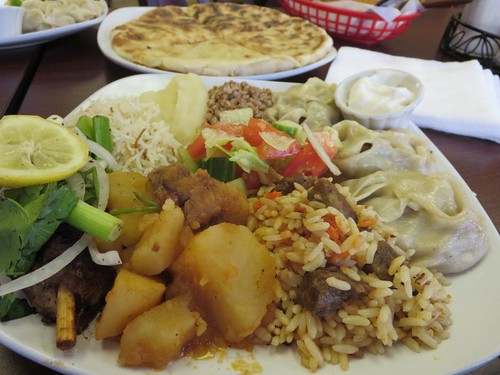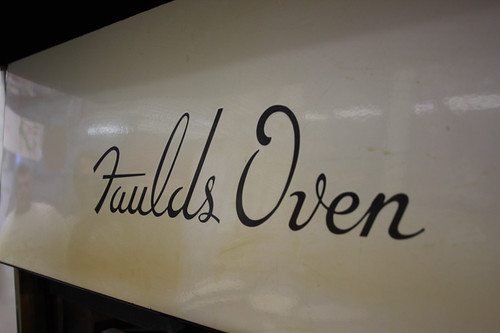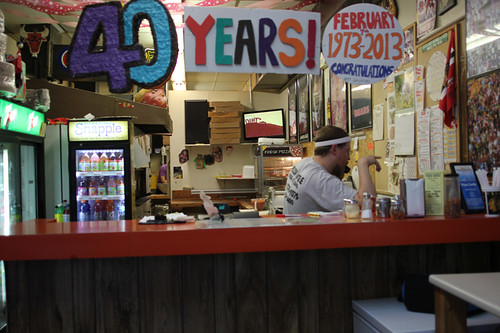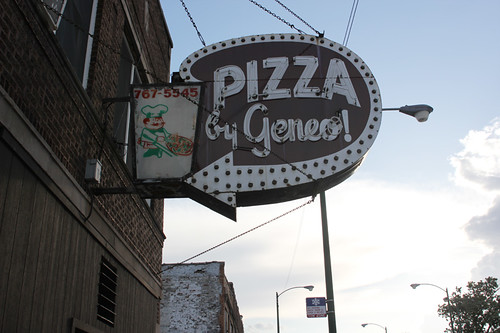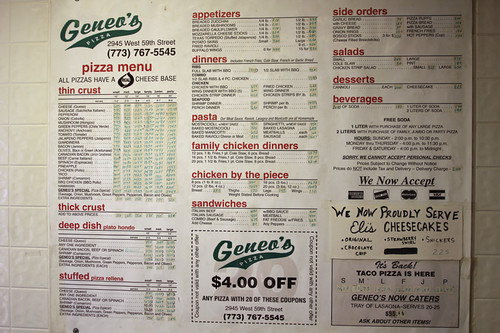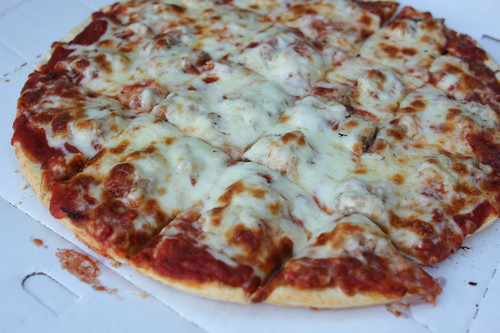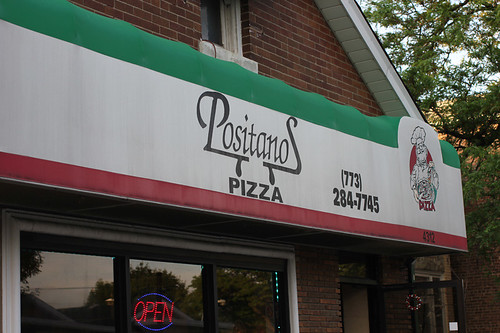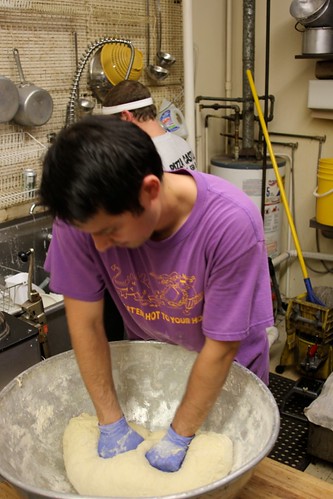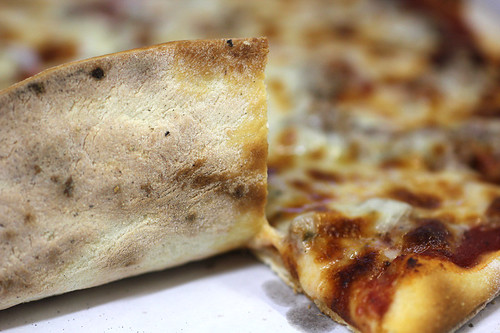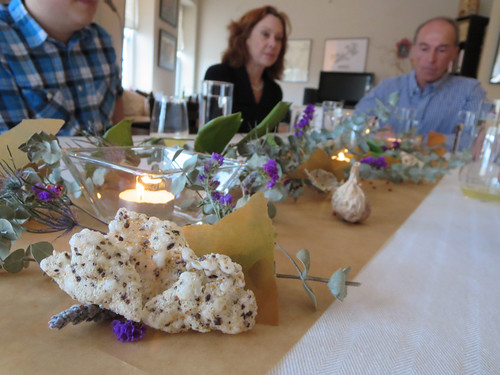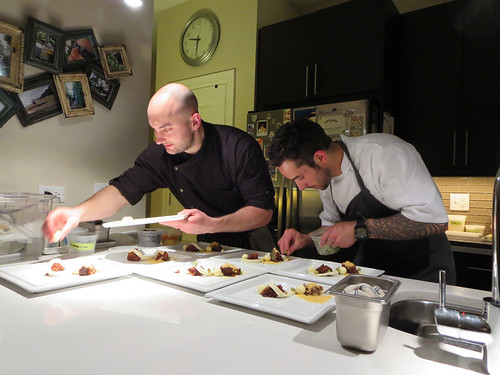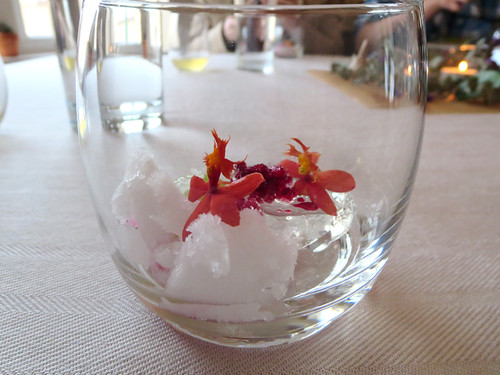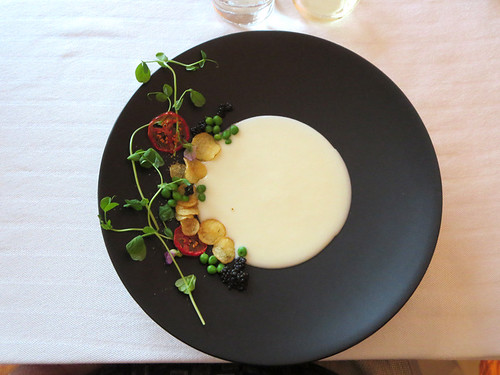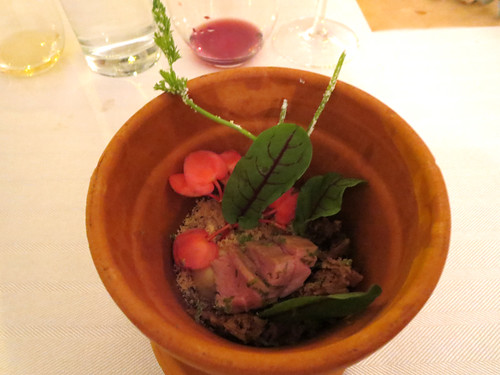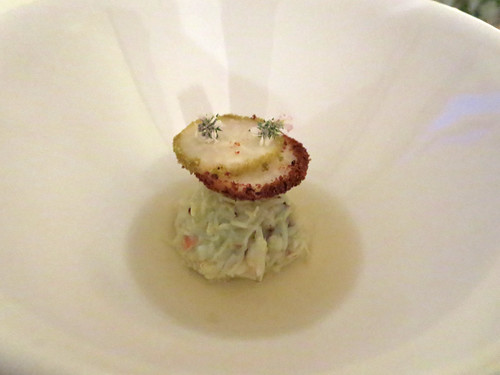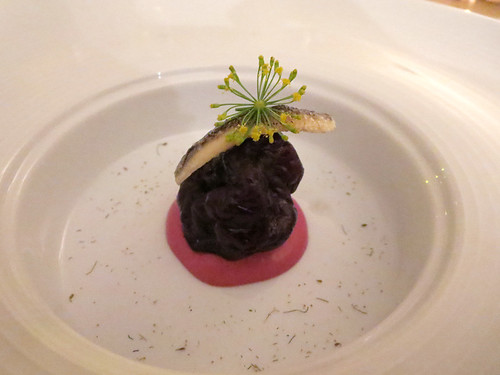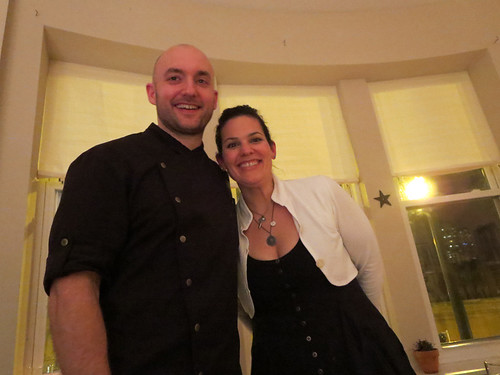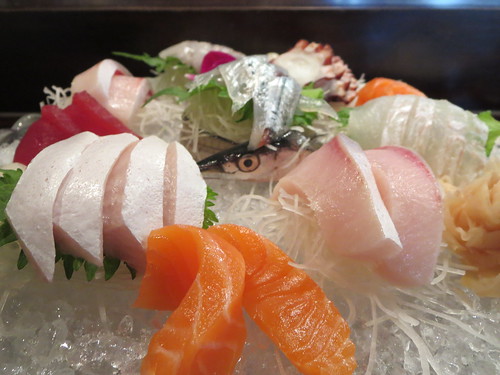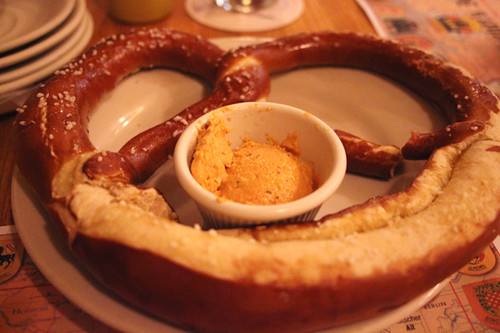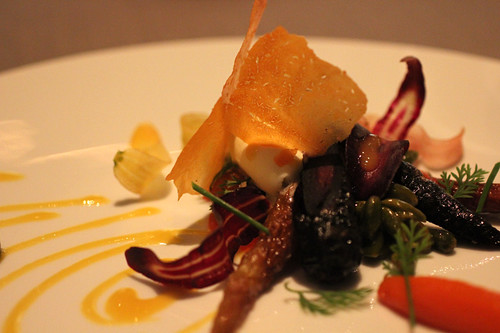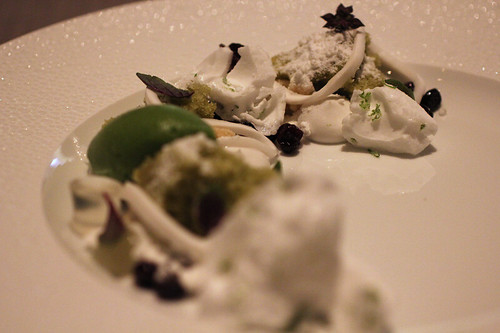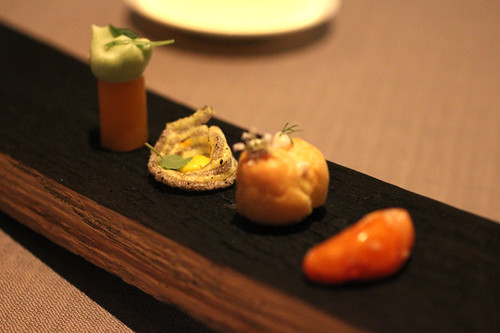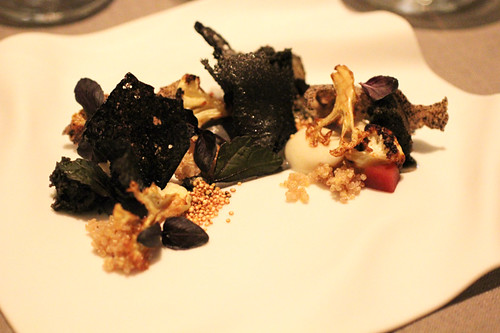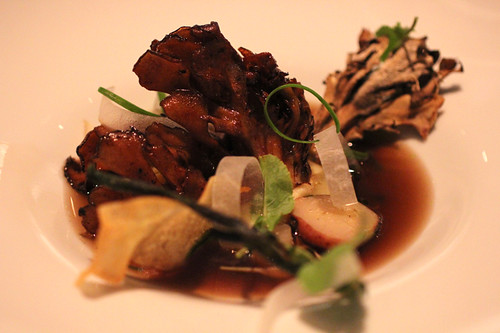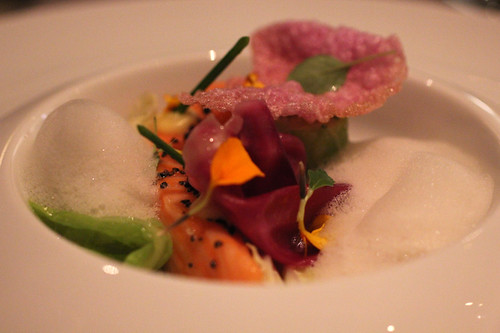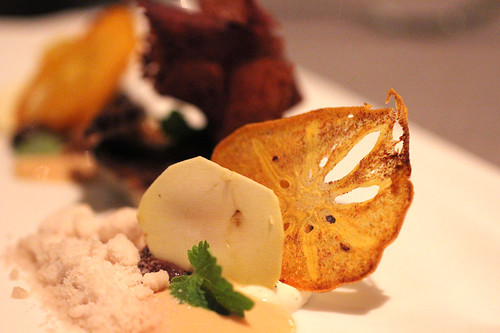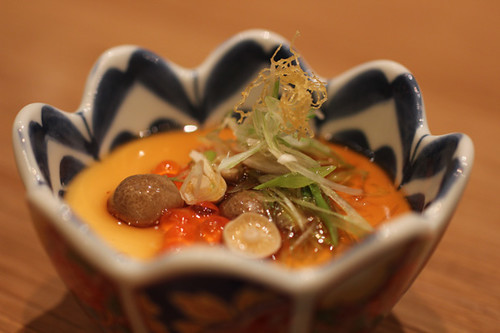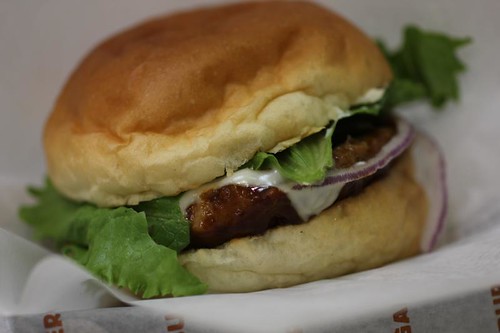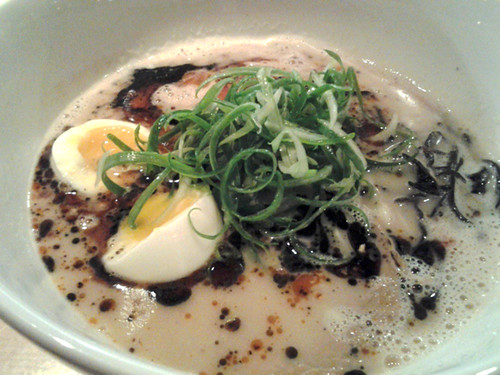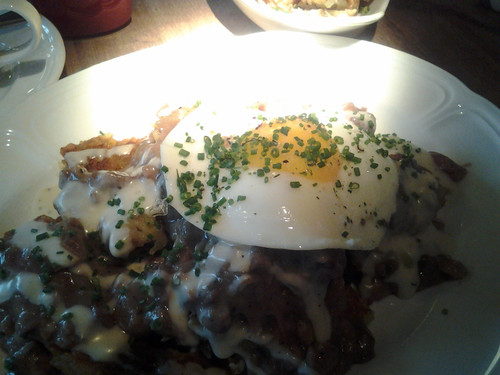Two sort-of Asian places have opened recently and occasioned back and forth on Twitter and such outposts of cutting-edge discussion. Mostly negative. I’m more okay with both, though less than enthusiastic:

Lao 18 is Tony Hu’s new sorta-posh River North spot. It has come in for plenty of beating from people who think it’s dumbed-down Chinese inferior to his Chinatown spots. Okay, it probably is. The extremely Caucasian waitresses in their Suzie Wong outfits probably don’t know jack about real Chinese food or drink. The giant upside down soup cups that decorate the lounge are goofy, but c’mon, they’re funny. All that said— it’s not bad. When you consider the kind of gloppy Chinese that Hu himself was recruited to dish out by the gallon at House of Hunan a few blocks away 20 years ago, this is amazingly decent for vaguely authentic Chinese food in this Disneyland neighborhood. I tried four things— some dumplings, that old favorite black pepper short ribs, twice cooked pork belly and salt and pepper squid. To a man (or a squid), they were about 80% as good, or hot, or funky, or whatever as they would be on Wentworth or Archer. And of course, given the location, they cost more. But they were not a mockery of what you’d get there. They were a pretty good lunch for downtown. (The short ribs might have even made it into the 90th percentile.) I mean, sure, if you can hop the red line to Chinatown, do that instead, but it’s not a crime to open a Chinese restaurant across the street from El Hefe Super Macho Taqueria. I feel like the scorn is a preview of what Mario Batali’s in for when Eataly pops up and starts making Italian food a few blocks away.
18 W Hubbard
Chicago, IL 60654
(312) 955-8018
lao18.com
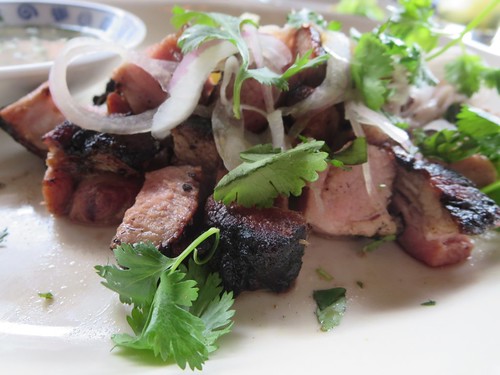
Mott Street has been praised as the hippest coolest newest thing from the hip owners of Ruxbin, and blasted as bland and underwhelming and bearing no resemblance to whatever the pre-opening publicity about serving “Asian night market food” implied. I’m of two minds about it. Mind #1 says that this is a pleasant place to hang out with a cool design, a nice patio, good drinks and very good and concerned service. Mind #2 says that there’s nothing here for $10 that is as good as something you can get for $6 somewhere else. (But give it credit for being $10, not $18.) The whiskey-soaked pork neck above, for instance, was chewy (maybe because it was cut in such thick chunks) and not very whiskey-soaked; you’d be better off with pork neck larb at TAC Quick. The Harry’s Butter Thighs:
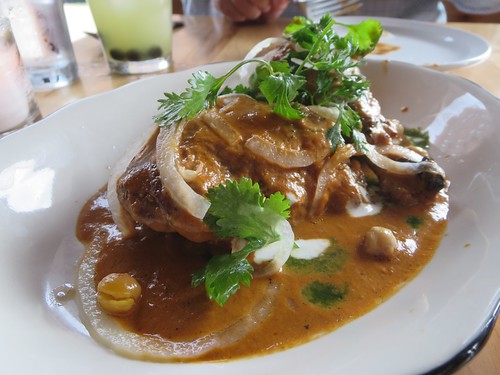
was a real dud, Trader Joe’s-level depth of Indian flavor, you could have two really good things at Ghareeb Nawaz for the price. The fried rice with crab brains:
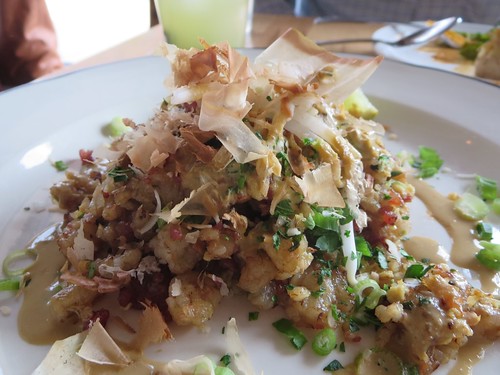
came closest to being an original and interesting dish, but didn’t have enough funk to get there. This “funky miso” broth:

was too bitter to eat. A few vegetables floating in the pungency of a household cleaning product, $8.
Okay, jeez, that was pretty rough. But I could still see going back with Mind #1 to hang out and have a drink and nosh on stuff. It’s just, if anybody tells you this is an exciting new addition to the local Asian food scene… no, not yet at least. Fat Rice is an exciting new addition to the local Asian food scene. Rickshaw Republic is. This is a nice place to have a drink, so far, and I hope the folks behind Ruxbin, which I do like a lot, can make it better for food over time.
1401 N Ashland Ave
Chicago, IL 60622
(773) 687-9977
mottstreetchicago.com
So is there anything new and Asian I have liked lately? Yes:

People love the fried chicken wings and bowls of Korean stuff at Crisp on Broadway. Those people are not me. The wings are okay, the bowls are bland, like the Japanese place in the Northwestern station food court I used to order from because at least what they offered had vegetables in it, a novelty in the late 90s west Loop. I suspected the same of DAK Korean Chicken Wings up in Edgewater, which opened around January, had a brief flurry of enthusiasm, and hadn’t been heard from since.
Wrong. I loved these giant, soy-garlic and gingery pterodactyl wings, and I thought the bowl of bulgogi was pretty tasty for simple lunchtime fare, too. It’s pricy, perhaps, but I’m happy to pay more for what I like than scratch my head again at what everyone thinks is so great.
1104 W Granville Ave
Chicago, IL 60660
(773) 754-0255
dakwings.com
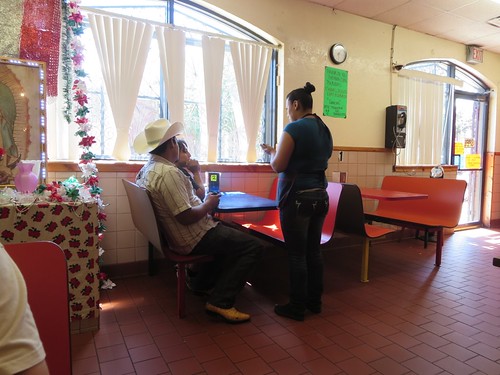
I’m probably going to be accused of dissing a new LTHForum fave for reasons of contrarianism or worse, so let me say that the last place somebody there (who has no love lost for me) found on 25th street, I loved and recommended unreservedly. (If the link doesn’t go directly, it’s slide #11.) A great find transcends earthly concerns. I had similar hopes for Taqueria Las Barrilitos, starting with the al pastor trompo in plain sight. Add in the housemade pickled onions and such and this looks like a place that cares a little more, which is the gist of the acclaim it’s gotten on LTHForum. Alas, my experience was more in the nature of a nice try; the pastor meat looked nice and crispy but didn’t have the rich, citrus-tinged flavor I was hoping for:

while the steak on the carne asada taco was overcooked nubs of again, underflavored meat. Thinking of La Chaparrita not far away I also gave crispy tripas a try, but the funky-not-in-a-good-way rings had none of the bacony deliciousness of that gem’s. Off days are always possible but this looked to me like how they like it, and I didn’t.
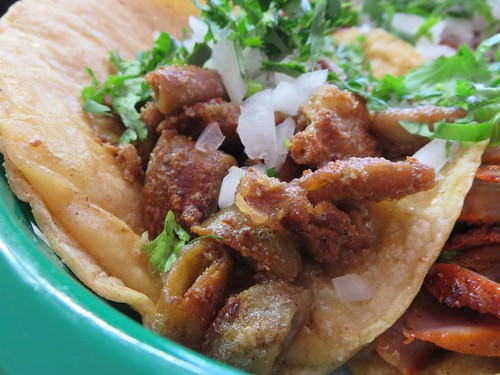
That said, I did spot and try a nice find on the way back to the car (besides this story, which I also came up with while down there to try Las Barrilitos), so the trip paid off— more on that shortly.
3518 W 25th St
Chicago, IL 60623
(773) 673-0102

Circling back to River North, Fabio Viviani is the celebrity name behind Siena Tavern, a massive operation routinely packed to the gills every night. The menu has some goofy modern touches— pasta in a jar— and things whose Italianness is questionable (they move a lot of crudo ahi tuna topped with salsa verde), but order to what they are likely to do well and they do well enough— everything executed pretty well, but not exemplarily well. Fabio’s mother’s gnocchi are beautifully tender, so one wishes the cream sauce they come in too much of had more of the other things on the plate (fried sage or parmesan) to give it flavors beyond, mostly, cream. A side of escarole with white beans, likewise, was a bit too bitter, swimming unsubtly in too much lemon, but you don’t order escarole because you don’t want bitterness, and with the occasional pop of a sweet tomato, it was a good, fresh-tasting summer dish. This has gotten some pretty tough reviews, and there are some misbegotten-sounding things on the menu that may well deserve that, but sticking to the hard-to-screw-up I thought what I had was about as good as most other downtown Italian places— though the fact that a Davanti Enoteca has opened a block or so away raises the bar for good enough Italian, for sure.
51 W Kinzie Ave
Chicago, IL 60654
(312) 595-1322
sienatavern.com
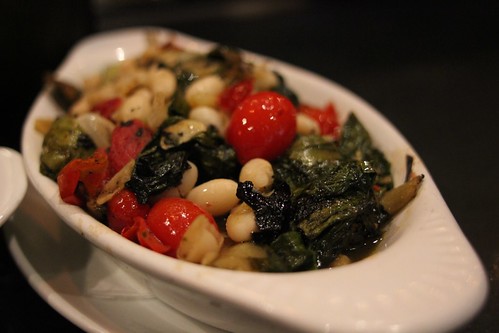
Note: I’m writing for both the Reader and Serious Eats Chicago now (congrats to Nick and Abby on the birth of Mira!) and turning out more than I need to link to every one, especially since you can just click on my name and see everything at each site. But I’ll recommend a few things like this piece about unsuspected family disputes at the much-beloved Cemitas Puebla or this think piece about celebrity chefs (occasioned by Siena Tavern above) at the Reader, or this account of the nearly lost dish Akutagawa and this tribute to an underappreciated Loop-area shop, Bombacigno J&C Inn, at Serious Eats. And of course, the most important thing you can do is listen to the most recent, Tiki-focused episode of Airwaves Full of Bacon.


 Posted in
Posted in 
